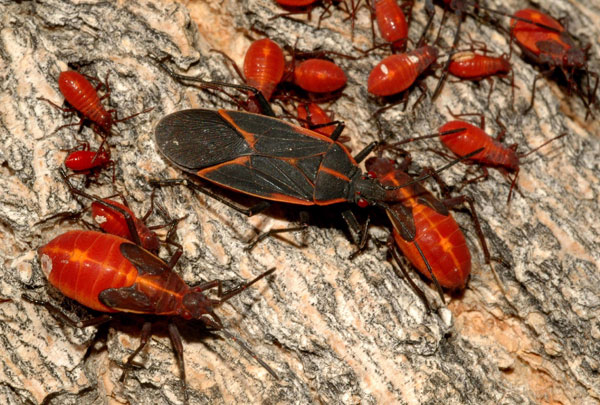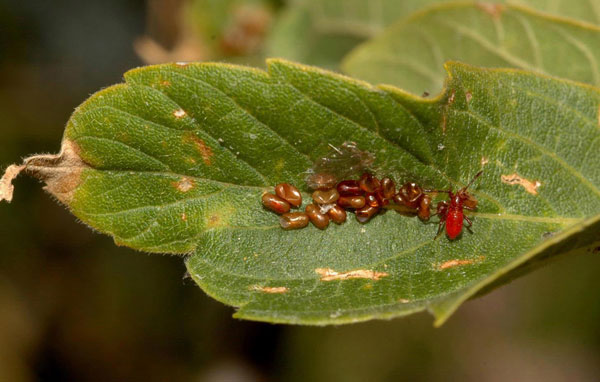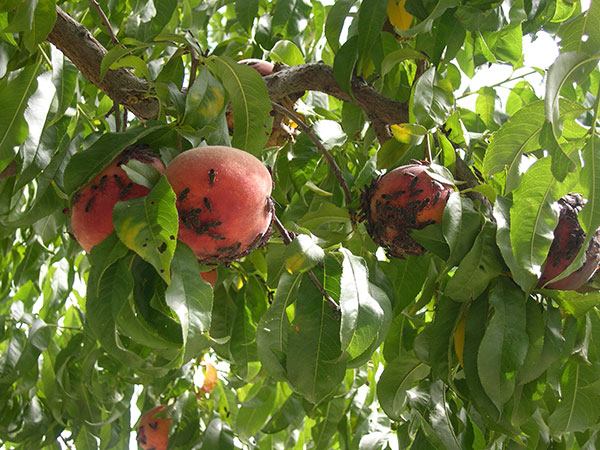Integrated Pest Management
Boxelder Bugs
HOSTS
- Apple
- Ash
- Boxelder
- Peach
- Pear
DESCRIPTION
Boxelder bugs can feed and develop on many kinds of plants, including maple, ash, stonefruits (cherry, plum, peach), apple, grape, strawberry and grass. However, large numbers are typically found on female boxelder trees where nymphs and adults feed on developing seeds. Although boxelder bugs are active throughout the summer, many people don’t notice them until they start “sunning” themselves on structures, particularly the southern-facing walls. As temperatures start to decrease in the late summer and fall, large numbers of adults will move from plants and congregate on heated buildings.
BIOLOGY
Adults are 1/2 inch long, elongated, oval, and flattened on top. Their bodies are gray to black, with distinct red lines on the thorax and wing coverings. The underside of the abdomen is striped in red and gray.
Eggs are small, oval, and red. They're typically laid on leaves, in crevices of bark, and on other surfaces.
Nymphs resemble small adults without wings. They're bright orange-red when first hatched, and the black markings appear when half grown.
SYMPTOMS
- Yellowing and curling leaves
- Spots on stems and new growth
GENERAL MANAGEMENT
Boxelder bugs, particularly the nymphs, are easily drowned. Regular use of a garden hose to water-down congregations of bugs is very effective. Since many homeowners regularly water their plants with a hose, this is a good time to wash boxelder bugs off of buildings.
Boxelder bugs have few natural enemies. There are no major insects or diseases that affect their populations, and spiders are considered minor predators. Birds fail to feed upon them in any significant numbers, probably due to the ability of the bugs to emit an offensive odor (which undoubtedly makes them taste bad as well).
Insecticides
Chemical control of boxelder bugs is difficult and not very successful because large nymphs and adults are tolerant of insecticides. Justification of insecticidal control depends largely upon the degree of the nuisance problem, the areas where they occur, and the numbers of bugs the homeowner is willing to tolerate.
There are about 175 insecticide Utah-registered products labeled for boxelder bug control in both indoor and outdoor domestic dwelling situations. About 50 products are labeled for boxelder bug control on boxelder trees or ornamental trees in general. Common active ingredients in products include chlorpyrifos, cyfluthrin, cypermethrin, D-phenothrin plustetrmethrinn, Dtransallethrinn, lambda-cyhalothrin, permethrin, and pyrethrins. Active ingredients in formulations labeled for use on trees include carbaryl, chlorpyrifos, cube resins plus rotenone, endosulfan, andnaledd.




